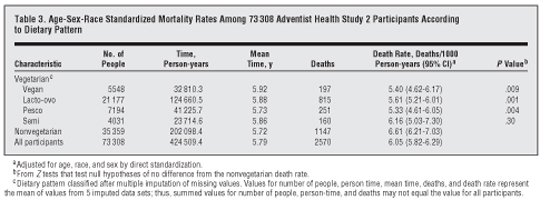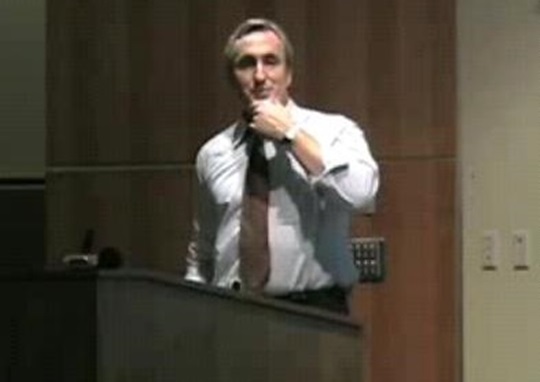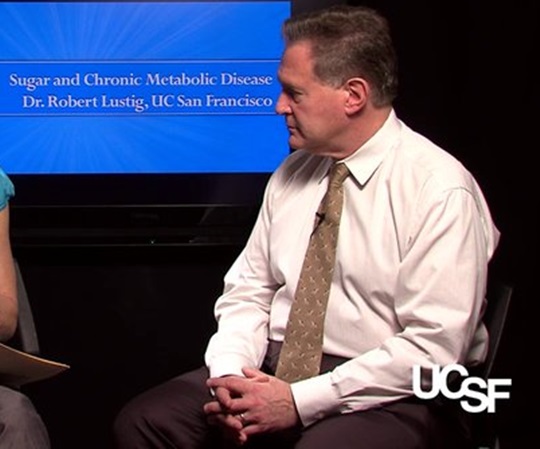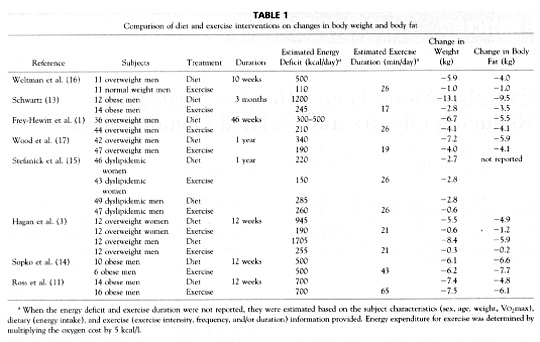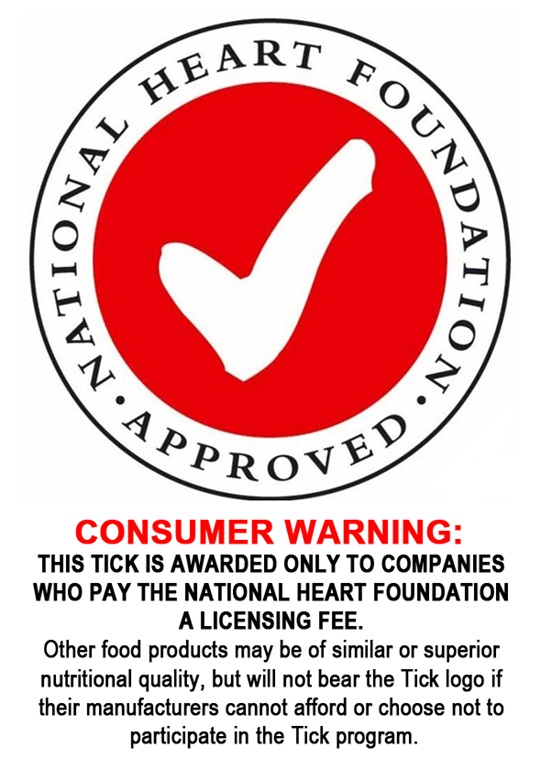Please note: This article contains occasional use of words that rhyme with and sound a lot like phuck, phucktard, and bullschit. Do not continue if you are offended by such words.
And definitely do not continue if you’re the kind of dimwit who thinks it’s fine for others to launch unprovoked attacks on my persona, but a big sin for me to return in kind. If that’s you, the following article may trigger an aneurysm LOL
—
Kate writes:
Anthony, I’d love to see your response to this guy calling you out:
http://primalnorth.blogspot.com/2013/05/sorry-anthony-colpo-truly-keto-athletes.html
Not a strong case at all in my opinion.
Anthony replies:
Well, well, what do we have here? Some very cocksure joker claiming I’ve got it all wrong when it comes to the well-established inferiority of low-carb diets for athletic performance.
The author, some bloke by the name of Danny Albers, uses the same entirely predictable method of attack favoured by virtually all my critics. It pretty much goes like this:
1. Read something by Anthony Colpo that destroys cherished beliefs;
2. Get angry! “How dare that Colpo asshole dispute something I staunchly believe in?!”
3. Pull out keyboard and type up long-winded blog post falsely accusing Colpo of cherry-picking and dishonesty. Include lots of smug, condescending insinuations and/or outright accusations that Colpo deliberately ignored or was too myopically dumb to include evidence refuting his argument!
4. To strengthen case against Colpo, employ lots of cherry-picking and dishonesty. Yeah, this is extremely hypocritical, but it’s for the good of the low-carb/vegan/intermittent fasting/[insert name of other beloved screwball diet] cause! Hey, all’s fair in hate and war!
5. When Colpo provides a spirited and uncomfortably sound refutation of this defamatory and totally unprovoked attack, accuse him of being nasty and vitriolic! Yes, this is ridiculously hypocritical, but refer back to #4.
We’ve seen this tired approach used by everyone from the lowliest Internet trolls to PhDs and MDs, all of whom have repeatedly and spectacularly failed to discredit my arguments. In fact, what they usually achieve is to both make themselves look like complete idiots and strengthen my own case even further.
Despite this well-established pattern, there’s still always some goofball out there who makes the mistake of assuming I’m as dumb as he/she is, who earnestly thinks he/she will be the one glorious pioneering troll to finally topple me with their patently transparent use of red herrings, misquotations and outright lies.
And so it is with poor Danny.
Danny Is as Danny Does
Albers doesn’t waste any time unleashing the bullshit – check out the heading to his post, for example:
“Sorry Anthony Colpo – Truly Keto Athletes Do Exist”
Sorry Danny, but I never said they didn’t.
What I did say was low-carb diets are distinctly inferior to high carb diets for athletic performance and that there are no athletes who have won world class athletic events while following truly low-carb diets. And I stand by both of these statements for the simple fact that they’re true, and will continue to stand by them until such time someone can provide me with factual evidence to the contrary, as opposed to smug, evasive, duplicitous, ad hominem Internet hogwash.
By the way, when I refer to athletic performance, I’m talking about strenuous glycogen-depleting activities in which you continually move your body through space, as opposed to standing on a stage in undies and flexing your muscles. Nonetheless, high-carb diets have scientifically and empirically documented advantages over low-carb diets for bodybuilders also, something we’ll discuss shortly.
So right from the outset, Danny’s article is based on a fraudulent statement, the claim that somewhere, sometime, in a galaxy far, far away, I made the assertion there are no keto athletes on Planet Earth, which is total bullshit.
Unfortunately, low-carbers revel in bullshit. They lather it up, joyfully rub it all over their skin with a near orgasmic expression on their faces– kind of like that sheila in the old Lux commercials, but with a triple chin – then lay back as it soaks deep into their eager pores, basking in the pungent radiance that only the freshest, sloppiest, nostril-pinching bovine poo-poo can emanate.
And, it must be said, Albers is no exception.
When trumpeting his fallacious “Colpo reckons there are no keto athletes!” red herring, Albers ignores a rather inconvenient fact. Namely, I’m no fan of vegetarian diets and I think vegan diets suck every bit as hard as low-carb diets, yet I’ve openly discussed the fact there are vegetarian and vegan athletes who – unlike low-carb athletes – have actually won world class athletic events. Why would I make this concession for vegan athletes, but not low-carb athletes, when I staunchly believe both dietary paradigms are a load of overhyped and pseudoscientific rubbish (as anyone who has ever spent more than four seconds at my website can readily attest)?
The answer to that is I make no such concession because there are no true low-carb athletes who have won a truly world class athletic event. But Albers needs to believe otherwise, because his mental capacity and strength of character simply do not allow him to consider the possibility that it is he – not me – who is wrong.
While Albers struggles to find endurance athletes who kinda-sorta-maybe-once-for-a-short-while followed low-carb diets, Dave Scott won the biggest triathlon event on the globe, the gruelling Hawaii Ironman, while following a strict vegan diet. And it was hardly a one-off fluke; while following his vegan diet, Dave repeated his win an amazing six times, a feat that has since been matched by only one other competitor (Mark Allen)!
Now, using the very same logic that underscores Danny’s own argument, this would mean that vegan diets are @#$%ing awesome for athletes, that there is absolutely no disadvantage to these diets, and that anyone who claims otherwise is a dopey, cherry-picking, conspiracy theorist dipshit! Hey, if anecdotal tales about people who allegedly train and even compete on low-carb diets are to be taken as ‘proof’ these diets are great for exercise, the experiences of people like Dave Scott should rightly be taken as proof that vegan diets are the most awesome of all.
If you’re a moron, that is.
Stop Telling Tales
Anecdotal stories, while useful, cannot be considered proof of a diet’s efficacy or superiority for a number of reasons. The main being that they are a highly uncontrolled example of evidence, one that does not take into account a virtually limitless array of potential confounders. In Dave Scott’s case, for example, we can reasonably ask if he would have done just as well or even better if he consumed animal products along with his plant foods. The answer, according to Dave himself, appears to be yes.
In 1994, he began eating fish, chicken and turkey and after doing so found his diet to be, in his own words, “much, much healthier”. Which just goes to show that a gifted, hard-training athlete can follow an inferior diet and still kick ass; innate talent and hours upon hours of dedicated training can help an athlete succeed in spite of a less-than-optimal diet. Keep this in mind a little later when we discuss the list of athletes and non-competitive exercisers Danny has dredged up in his desperate attempt to support his limp low-carb thesis.
By the way, if you’re a reality-hating zealot who refuses to believe what I’ve just written, then fine, listen to Dave “The Man” Scott himself:
Refreshingly objective and non-religious dietary commentary from one of the greatest triathletes of all time.
The same year he began consuming animal flesh, Scott came out of competitive retirement at the age of 40 to take second place at the Hawaii Ironman World Championships, very nearly winning for a record-breaking seventh time. A pretty damn impressive performance after a long competitive lay-off, and especially impressive for someone whose age would qualify him as a master’s athlete in many sporting organizations. And that wasn’t the end of it – in 1996 at age 42, he returned again to place 5th, running the marathon in 2:45.
Anecdote versus Science
Obviously, relying solely on anecdotal tales can lead to all sorts of misleading assumptions. Therefore, the best way to determine whether a low-carb, vegan or whatever other diet is superior or even just plain equal when compared to the omnivorous high-carb diet typically recommended to athletes is not by cherry-picking examples of athletes and bodybuilders who allegedly follow your favoured diet. Rather than resorting to such selective, subjective and highly defective bollockery, the correct approach would be to defer to the scientific method and conduct a randomly controlled clinical trial (RCT) in which your favoured diet is compared to an omnivorous high-carb diet.
Which brings us to the second act of blatant dishonesty committed by Albers. He claims “My favorate [SIC] way to counter sweeping declaritions [SIC] of certainty is with a clinical trial that proves otherwise.”
He then provides links to two of these ‘clinical trials’, but one is not a trial at all – it’s simply a discussion paper by none other than Stephen Phinney:
http://www.nutritionandmetabolism.com/content/1/1/2
Phinney, as my regular readers will know, is a researcher who has ‘tested’ low-carb diets and erroneously claims they do not impair endurance performance. Phinney has participated in Atkins-funded research, sits on the Atkins Nutritionals “Science Advisory Board“, and has a further vested financial interest in the low-carb paradigm via his books The Art and Science of Low Carbohydrate Performance, The Art and Science of Low Carbohydrate Living and The New Atkins for a New You (all co-authored with Atkins-sponsored researchers Jeff Volek and Eric Westman).
Phinney is also the guy who caused an excited buzz in the low-carb community late last year when he publicly claimed ultra-endurance runner Timothy Olson won the Western State 100-mile race while following a low-carb diet. But when asked for further details about Olson’s diet, Phinney flatly refused to share them, stating:
“I wouldn’t tell you the details even if I knew because it’s confidential research information.”
What?!?
Phinney appeared to be admitting he didn’t even know the details of Olson’s diet! Which, of course, begs the question of why on Earth he felt qualified to publicly make grand statements about it?
Then he stated that even if he knew the details, he wouldn’t share them with us anyway, because they’re “confidential”.
Yeah, sure. They’re so ‘confidential’ that Tim himself has publicly described his eating habits, and they sure as heck ain’t low-carb. As I explained in this article about Tim, his so-called ‘low-carb’ diet included sweet potatoes and “lots of vegetables, fruits”, along with rice and corn tortillas. And while Phinney would have us all believe Tim was a ketogenic “fat-adapted” athlete who powered through his races relying solely on his body fat stores, the truth was Tim consumed ample amounts of in-race carbohydrate in the form of soft drinks, Gu gels, Cliff gels, honey stingers, the carbohydrate-rich EFS drink made by one of his sponsors, First Endurance, and even orange slices!
Low-carb athlete my foot.
I just checked Tim’s blog to get an idea of where he’s currently at with his diet and training, and this is what he wrote recently (April 10):
“I don’t like labels and would not call myself low-carb, paleo, etc. I would say that I follow a diet with more protein & fat and less carbs than most people and that it has helped me recover faster, reduce inflammation and overall just feel healthier. My diet consist [SIC] of mainly organic and local if possible grass-fed meats, vegetables, eggs, nuts, seeds, fruits, sweet potatoes and coconut oil.”[Bold emphasis added]
Despite this, Olson is the very first athlete Albers cites in his post as a shining example of low-carb athletic success! He writes:
“I thinks its [SIC] quite obvious Tim does not follow a ketogenic diet at all, but he does follow a “minimal carb approach” and mindfully times his carbs and eats in a way that promotes body fat as his primary fuel source. An earlier article by Anthony Colpo rightly points out that Tim Olson is not a VLC practitioner, however his carb consumption compared to others in his sport is incredibly lower in carbs.”
What you just witnessed was the red herring weasel-word approach to dietary argument. Faced with the uncomfortable fact Tim’s diet is not even remotely ketogenic, Albers nevertheless claims it still qualifies as low-carb because it is “incredibly lower” than the runners he competes against. What I would like to know is exactly what data Albers bases this grand claim upon? Does he know the actual carbohydrate intake of Olson’s competitors? Does he even know Olson’s actual carbohydrate intake?
I think we all know the answer to those questions.
Danny employs a rather sneaky tactic here, but thankfully most of my readers are of the non-lobotomized variety and will quickly see through his duplicity. But for the sake of Danny and his fellow fanatical low-carb ilk, I’ll point out the following:
Even if someone eats less carbs than their competitors, that in no way automatically means they eat low-carb. If, for example, your competitors average 600 grams of carb per day and you average 300, that doesn’t even begin to make you a low-carber. I love the glycogen-depleting sport of cycling, but even in the midst of summer when my cycling mileage is at its highest, I’d struggle to get more than 600 grams of carbs down my gullet, and my daily average would be closer to 500 grams. Pro cyclists competing in stage tours, meanwhile, have been documented by researchers (as opposed to semi-literate bloggers) to put away almost 1000 grams of carbs daily, and we’re talking guys who are 15-20kg lighter than me!
So using Danny’s logic…I’m a low-carber!
THUD!!
Excuse me while I pick myself of the floor, folks, I just fell off my chair laughing!
THUD!!
Godamnit Anthony, get it together!
Sorry everyone, he’s a funny guy, this Danny!
OK, OK…composure now regained. Which will allow me to ask another question of Mr Albers: Why, exactly, do you write Olson “mindfully times his carbs and eats in a way that promotes body fat as his primary fuel source” yet make absolutely no mention of the abundant in-race carbs Tim himself has acknowledged using to get through his races?
Let me answer that for you: Because it would oblige you to remove Olson from your collection of alleged low-carb athletes, thereby weakening your argument. So, like most duplicitous and dogmatic low-carb shills, you simply ignore the discomforting contradictory facts, acting as if they never existed.
And you then smugly turn around and repeatedly and condescendingly imply in your article I’m the one too dopey to acknowledge contradictory facts!
How utterly precious.
Back to the Trials …
Before I debunk the other trial Albers believes support his low-carb beliefs, I want to address the frequently-cited trial conducted by Stephen Phinney that supposedly showed no performance decrement among cyclists after four weeks on a zero-carb diet. If Albers wanted to cite Phinney, and believes so strongly in the primacy of clinical trials, he could easily have mentioned this study and its numerous flaws, but n-o-o-o-o, he instead links to what essentially constitutes an opinion piece by Phinney that wanks on about Eskimos, pemmicam and Arctic explorers.
Good on ya, Danny.
So let’s do the distinctly un-Danny thing and examine this trial in detail. It involved trained road cyclists who were placed by Phinney and co on a zero-carb diet for four weeks. Within seven to 10 days of eliminating carbs, the cyclists experienced the well-known transient energy crash many folks experience soon after starting a ketogenic diet. During this time, the cyclists felt like crap and had difficulty keeping up their training schedules. This passed, and after four weeks no decrease in endurance was allegedly noted when they were tested at 62-64% VO2max.
Phinney et al concluded “aerobic endurance exercise by well-trained cyclists was not compromised by four weeks of ketosis”, and low-carbers have been more than willing to readily accept this claim at face value.
Which is a pity, because it’s nonsense.
Here’s what you haven’t been told: While the performance of the cyclists at 62-64% VO2max was reportedly unaffected by the ketogenic diet, Phinney casually admitted years later in a throwaway comment that their ability to perform more intense activity (sprinting) deteriorated!
Where exactly did he admit this?
In the very article you can find when clicking the second link Albers provided at the start of his blog post. You know, the one Albers falsely claimed was a clinical trial. Danny is quick to post the link, but not so quick to mention this pivotal piece of information. Which means he either hasn’t read Phinney’s article, or he has read it but didn’t understand what he was reading, or he did understand but ignored its implications and went ahead and posted it on his website any old how knowing full well most of his readers are committed carbphobes who won’t even bother to open it.
Whichever of these possibilities actually transpired, the end result is the same: We have yet another example of misleading carry on by an individual who is quick to impugn the integrity and competency of others while he himself spews forth unbridled bullshit.
As for Phinney, rather than discuss the performance-killing implications of his findings, he simply described the sprinting performance of the ketogenic cyclists as “constrained”, then quickly moved on as if nothing ever happened.
Yep, nothing to see here, folks, move along!
Not so fast.
As I’ve previously pointed out, telling a competitive cyclist that a zero-carb diet won’t affect his ability to perform moderate endurance exercise but his sprinting ability will be “constrained” is a bit like telling a grown man that lopping off his willy won’t affect his general mobility but will “constrain” his sex life.
Yep, it would be an understatement of most prodigious proportions.
Given that most cycling races are won only after a frantic sprint to the finish, the correct conclusion from Phinney’s study would be:
“Zero-carb diets are bloody useless for competitive cyclists!”
In fact, they’d be pretty much useless for any sport that includes both an endurance component and short bouts of explosive activity which would be, um, almost every popular sport in the world.
It’s at this point that the low-carb shills will object that the cyclists’ poor sprint performance was due to insufficient fat adaptation. The cyclists needed longer to become fat adapted and then their performance would have been fine blah blah blah…
Sure thing. And if you lob off a guy’s willy, it will magically grow back if you wait long enough.
As we have already discussed, the subjects experienced the customary initial energy crash that frequently accompanies the fat adaptation process. This was accomplished within ten days, right at the start of the study. By the end of the four week study, the subjects were well and truly fat adapted, a fact confirmed by respiratory quotient (RQ) testing. Measuring RQ allows researchers to check how a person’s fat adaptation is coming along, and is typically expressed on a scale ranging from 1.0 (pure carbohydrate oxidation) to around 0.7 (pure fat oxidation). At the completion of the study, Phinney’s elite cyclists displayed a mean RQ during testing at 60-65% VO2max of 0.72, a bee’s cajone away from 0.7[1]. In other words, they were as ‘fat adapted’ as they were ever going to be.
Wait a Minute…their Aerobic Performance Sucked too!
Based on what we’ve discussed so far, you’d think it was only sprint performance that deteriorated among Phinney’s cyclists. Remember, Phinney claimed – and continues to claim – that the aerobic endurance of the cyclists was unaffected by the ketogenic diet.
But is that true? Is that what the results actually showed?
Nope.
Even at the low aerobic intensity used in this study, two of the cyclists did in fact experience significant declines in their time to exhaustion (-48 and -51 minutes)!
Another experienced a 3-minute increase, while two others experienced a 30-minute and a hefty 84-minute increase.
But you wouldn’t ever know this unless you scrupulously examined the individual data for yourself, because Phinney and his team simply combined the results of all five cyclists and calculated the mean time change, which gave the misleading impression of an unchanged time-to-exhaustion performance across the board, then presented that as their final result.
So most people who are told this study proves low-carb diets pose no threat to endurance performance are blissfully unaware that two of the 5 cyclists in fact experienced massive declines in performance. Another experienced little change, leaving the two remaining cyclists who experienced substantial increases in their time to exhaustion. Well, three out of five ain’t bad, right?
Actually, given the design of the study, it’s very poor. And here’s why: During the first week of the study, the cyclists consumed a high-carbohydrate diet supplying enough calories to keep their weight stable. The next four weeks were spent on an isocaloric zero-carb diet that also resulted in no weight change (hmmm, what happened to the “metabolic advantage”?) At the end of weeks one and four, the cyclists performed their endurance tests.
What’s wrong with that, you ask?
Everything.
The study, to be quite frank, was poorly conceived and conducted. Unlike other studies, there was no familiarization test and the before and after tests were not performed in random order.
While non-cyclists may assume they’re the same thing, stationary cycling and road cycling on a real bike involve very different dynamics, both mentally and physically. For one thing, stationary cycling at a set pace for hours on end while you remain in one spot is, let’s be perfectly honest, boring beyond batshit. In contrast, road cycling is a far more interesting and mentally engaging endeavour that involves continual input of sensory data from the environment, especially in a race situation. And rather than outwit competitors or complete a set distance in the quickest possible time, in a stationary bike ride-to-exhaustion test you’re simply pedalling at a set pace for as long as possible, until you feel too knackered to continue. If you’re not familiar with such a test, this ‘exhaustion’ may occur prematurely as result of psychological rather than physiological factors.
Then there are the physical differences. Riding a real bicycle allows you to use a lot of “body English” as you rhythmically bob from side to side. You simply can’t do this on a stationary bike. I’m sure every road cyclist who’s ever ridden an ergo will have experienced that moment where they wanted to pick up the pace and start throwing the damn thing from side to side, only to remember they’re on an immovable one-dimensional contraption that allows no lateral movement, only forward rotation of the cranks.
Now, I don’t know about the stationary cycling experience of the cyclists in Phinney’s study (and I’m guessing Phinney doesn’t either), but a good many road cyclists do not own stationary bikes. Even in the depths of winter, most of the serious roadies I know would rather get out and do battle with the elements on a real bike than sit indoors going nowhere for 90 minutes.
Which means if you are going to conduct a clinical trial in which the subjects will be subjected to unfamiliar tests – such as road cyclists being made to stationary cycle to exhaustion – good science dictates you allow the subjects to undergo familiarization tests before getting down to the nitty gritty. Some researchers use a single familiarization test, while others employ several to be doubly sure any changes in performance observed during the subsequent trial are genuine intervention effects and not simply an artefact of the subjects becoming familiar with the new activity.
Phinney and his team, for reasons known only to them, didn’t bother with any familiarization protocol. None whatsoever!
Nor did they bother to include an isocaloric four week high-carb phase, and randomly assign some cyclists to do that phase first and others to do the zero-carb phase first.
Instead, everyone performed the first test after only one week of the high-carb diet, then the second test after four weeks of the zero-carb diet. Therefore, the two significantly improved performances were in all likelihood simply an artefact of test familiarization. In other words, the increased time to exhaustion seen in two of the cyclists was most likely due to improved efficiency as a result of a learning effect after performing a formerly unfamiliar test for the second time. As Andrew R. Coggan, Ph.D, an exercise physiologist, multi-sport endurance athlete and prolific published researcher, noted: “in my opinion, and those of many others, such large changes in performance are not believeable, [SIC] suggesting that the pre-diet performance of [the cyclist who experienced an 84-minute increase] was greatly underestimated”[2].
If this is the case – and I firmly believe it is, given that far higher quality research involving carbohydrate restriction has failed to replicate the performance improvements claimed by Phinney – then the true implications of his study are very different to the ones he routinely claims.
Namely, if the increases in ‘endurance’ noted in two of the cyclists were an artefact of test familiarization, that means the zero-carb diet sucked so badly that despite this familiarization one of the subjects experienced no significant improvement and the remaining two experienced significant declines in performance!
Or to put it in even simpler terms, ketogenic diets are so bad that in 60% of cases they will negate the powerful improvements seen with test familiarization!
Or to put it another way, keto diets suck the big one for both aerobic and anaerobic performance!
Or in even simpler terms…ok, ok, I think you get the picture.
So What Happens When a Properly Conducted Study Examines Carb Restriction and Cycling Performance?
In 2000, Helge and colleagues from the University of Copenhagen published the results of a longer clinical trial. During the first seven weeks of this study, one group ate a high-carb diet, the other a low-carb/high fat diet. During the eighth week, both groups ate the high-carb diet. The subjects trained three times a week during the first 4 weeks, then 4 times a week during the last 4 weeks on stationary cycles, at a controlled exercise intensity that ranged between 60 and 85 percent. The workouts lasted 60-75 minutes.
So unlike Phinney’s study, in which all five cyclists were made to follow a high-carb diet for only one week and then a zero-carb diet for 4 weeks, this was a controlled parallel study in which the subjects were randomly assigned to follow low- or high-carb diets concurrently for a similar length of time.
An added bonus of this study is that in the final week, the low-carb group was also allowed to eat a high-carb diet, which helped examine the claim that “training low [-carb] and competing high [-carb]“ would produce a performance advantage thanks to super-duper glycogen supercompensation.
During the first seven weeks, the low-carb/high fat group ate 177 grams of carbs and 217 grams of fat per day. The high-carb group ate 546 grams of carbs and 75 grams of fat per day. Both groups ate similar amounts of protein.
While 177 grams of carbs may not typically be considered ‘low-carb’, keep in mind that exercise increases the carbohydrate threshold required to reach ketosis. Indeed, blood ketones rose markedly during the study in the low-carbohydrate group, and were far higher at seven weeks than in the high-carb group.
Also keep in mind I’m reporting this in response to the claims of one Danny Albers, who by his own criteria and appraisal of Tim Olson’s diet is logically required to consider a daily 177 grams of carbohydrate to be “incredibly lower” than that consumed by most serious cyclists…
Anyway, when time to exhaustion at 81% VO2max was tested at 7 weeks, the high-carb group improved their time by a mighty 191%. The poor low-carbers meanwhile, with their super cool wicked awesome “incredibly lower” carb intake, could only manage a meagre 68% improvement!
So much for ‘fat adaptation’…
After the eighth week, when both groups ate the high-carb diet, the low-carb group managed to improve their time by another 18%, but their average time to exhaustion was still much shorter than that of the high-carbers[3].
So much for super-duper-train-low-compete-high-glycogen-recompensation…
Bottom line: Both zero-carb and supposedly “non-ketogenic” low-carb diets are woefully inferior to high-carb diets when it comes to fuelling athletic activity.
That’s what the controlled research shows, Danny! I don’t make this stuff up, I simply relay what researchers did and what they reported with ruthless indifference to anyone’s pet dietary beliefs.
But Danny and his low-carb compatriots simply refuse to believe what the research shows. Rather than read the research in its entirety with their own eyes, and acknowledge the majority of athletes use high carbohydrate diets because they have been proven in tightly controlled research to be superior, they prefer to believe high-carb diets are favoured simply because that’s what athletes have been brainwashed into following. Yep, the only reason pro athletes don’t rock the field on low-carb diets is because, in Danny’s words, they’ve been repeatedly told it’s “IMPOSSIBLE”!
Yep, the real problem here, according to our budding expert, is a lack of enlightenment among pro athletes and their advisors! These poor sods need to open their minds, and their newly-ketogenic asses will follow!
Thankfully, people like Albers haven’t even begun to be taken seriously by professional athletes and their coaches. Otherwise, we’d have the sad spectacle of professional athletes who look like they’ve been doping with Valium instead of EPO and testosterone…
Needless to say, there has never been any brainwashing campaign to hide the alleged benefits of low-carb diets from athletes. The reality of the matter is that researchers have in fact repeatedly tried to find an ergogenic effect of carbohydrate restriction and ‘fat loading’, and their efforts have been a disappointing failure. After reviewing this research, fellow Aussie and exercise physiologist Louise Burke and her colleague Bente Kiens noted, “those at the coal-face of sports nutrition can delete fat loading and high-fat diets from their list of genuine ergogenic aids for conventional endurance and ultraendurance sports.”
Regular readers know I generally couldn’t give two turds about so-called decorated credentials, but Louise Burke is the real deal: An individual who works with elite Australian athletes, who truly knows her stuff when it comes to athletic nutrition, whose work I greatly admire, and whose knowledge would absolutely cock its leg and pee all over the fanciful, nonsensical slop offered by any low-carb shill. When Louise speaks on the topic of sports nutrition, anyone who’s not a brain-damaged low-carber should listen carefully, which is why I highly recommend her book Practical Sports Nutrition![]() . No, it’s not the cheapest book at Amazon but its contents are truly worth thousands of times the cover price of your typical popular format Atkins-Protein-Power-Skinny-Bitch-China-Study-type garbage. Seriously, Burke’s book should be on the shelf of every single trainer and nutritionist who has to deal with competitive and serious recreational athletes.
. No, it’s not the cheapest book at Amazon but its contents are truly worth thousands of times the cover price of your typical popular format Atkins-Protein-Power-Skinny-Bitch-China-Study-type garbage. Seriously, Burke’s book should be on the shelf of every single trainer and nutritionist who has to deal with competitive and serious recreational athletes.
Anyway, back to the matter at hand…
The Other Trial
I’m delighted Albers cited a recent trial involving Italian gymnasts in his first hyperlink, as I’m including a discussion of this very study in my upcoming book Why Carbs are Absolutely Bloody Awesome! (relax, that’s just the working title). So Danny has saved me some valuable time – so nice of him!
You can access the full text of this study here (Albers provides a link to the abstract only, which again leads me to suspect he hasn’t even read the actual study).
The paper is titled “Ketogenic diet does not affect strength performance in elite artistic gymnasts” and was conducted by Paoli et al at the University of Padova in Italy. In true dimwit fashion, I’m guessing most of the folks who cite this paper in support of low-carb diets barely made it past the title, and few if any have carefully read the actual study.
The study was partially funded by Gianluca Mech SpA, an Italian food company that produced the high-protein, zero-carb supplements used in the study. Antonio Paoli, the main researcher responsible for the study’s conception, design, statistical analysis and interpretation of data and draft of manuscript, has been a consultant for and has received grant/research support from Gianluca Mech. Another of the researchers, Lorenzo Cenci, is a paid scientific consultant for Gianluca Mech.
Not that that would ever influence the design and results of the study, no sir.
Or would it? Let’s take a look…
The first important thing to point out about this study is that it was not a study in which two diets identical in every respect except for their fat and carbohydrate intake were compared head to head. Instead, the subjects were compared while following their usual diet for 30 days, and while following a 30-day intervention diet that included not just carbohydrate restriction, but a number of other key changes.
Read that last sentence again folks.
This was a study in which the test diet involved multiple interventions, only one of which was carbohydrate restriction. As noted earlier, at no point did the subjects follow a high-carb diet that incorporated these other interventions, leading us to the first major problem with this study: The results are being used to claim ketogenic diets do not harm physical performance, when in fact the alleged lack of harm in this study may have stemmed from other factors. Regrettably, this study does not tell us what would happen if these confounding factors were removed and a ketogenic carbohydrate intake was examined in isolation.
Just what kind of factors am I talking about?
Well, when following their everyday diet, the subjects’ average (self-reported) daily protein intake was a meagre 83.5 grams. During the ketogenic intervention diet, this more than doubled to 200.8 grams per day!
The nine subjects in this study were elite Italian gymnasts, two of whom belonged to the Italian national team. So the first question that begs to be asked is why the heck are elite Italian gymnasts eating a poncey protein intake of only 83 grams per day?
The second question that must be asked is why is this study being used in support of carbohydrate restriction when it in fact also included a dramatic increase in protein intake? Protein intake is a variable independent of carbohydrate intake, ie, one can just as easily consume diets that are high-protein/high-carbohydrate, high-protein/low-carbohydrate, low-protein/high-carbohydrate, and so forth. Which means that if this study was truly intended to examine the effect of ketosis upon performance, it should have examined two diets with identical protein contents, varying only in their fat/carbohydrate ratios.
Needless to say athletes of all stripes have been consuming high-protein/high-carbohydrate diets for years, and have done so with great success. High-protein/low-carbohydrate diets?
Not so much.
In fact, in the endurance world, not at all.
The second glaring inequity in this study is the fact that while following their usual diets the subjects were not provided with any nutritional supplements. During the ketogenic phase, however, the subjects were supplied with protein supplements, a daily multivitamin-mineral supplement, and were also given four different herbal formulas containing a wide variety of herbs! All supplied, of course, by Gianluca Mech.
The herbal formulas, it should be noted, included ginseng, miura puama and guarana – the latter containing caffeine.
So what we now have is a study comparing a low-protein/high-carbohydrate diet devoid of nutritional supplements with a high-protein/low-carbohydrate diet featuring extra vitamins, minerals and an array of herbal extracts – some with potential ergogenic effects.
Looks like the low-carb crowd has taken a leaf out of the Ornish/Esselstyn low-fat book: Conduct a trial using a multifaceted intervention, then automatically ascribe any observed benefit to the feature you wish to glorify. In the case of Ornish/Esselstyn, that feature is a highly restrictive fat intake; in the case of low-carbers, it’s a highly restrictive carbohydrate intake.
Either way, this kind of duplicity has no place in science.
If you conduct a multifaceted intervention, then when discussing the results be perfectly clear that they arose from a multifaceted intervention, rather than floating off into fairyland and pretending they were due to your pet aspect of that intervention.
So what did the results of the Italian study show, exactly?
Before I answer that, remember that the argument put forth by myself is that low-carb diets are vastly inferior for sports performance, while Albers claims not only are they are A-OK but that they in fact confer a “competitive advantage”. And he cites this study in support of his stance.
Which is most interesting given that while this was a study with gymnasts, their performance in actual gymnastic events was not assessed at any point during the study. I repeat: This study did not examine performance in a glycogen-depleting sport activity.
Instead, the researchers simply got the gymnasts to perform a bunch of bodyweight exercises before and after each 30-day diet period. These tests consisted of doing as many repetitions as possible of push-ups, reverse grip chin-ups, hanging leg raises, and parallel bar dips. The subjects were also tested for maximal height achieved in the squat jump and counter movement jump,
When the data were tallied up, there was no difference in performance on these tests before and after either the standard or ketogenic diet phases.
The only change of any note was a mean 1.9kg loss of fat and 1.6kg overall weight loss in the ketogenic group, a consequence of the lower caloric intake (-300 cals/day) consumed during this phase. The researchers reported “a non-significant increase in muscle mass”: 300g during the keto phase, 200g during the standard diet phase.
So even with what our boy Danny would call an “incredibly higher” protein intake and a bunch of extra supplements, the ketogenic diet did nothing that any other diet providing the same level of caloric restriction couldn’t do.
As for Albers’ claim this study disproves my assertion that ketogenic diets impair athletic performance in glycogen-depleting sports, my suspicion he hasn’t even read the study appears to have been spot on. The study didn’t even look at athletic performance – the only tests involved were brief jump tests, which literally lasted a split second each, and four single sets of various bodyweight exercises each performed for 15-43 reps.
These tests, in other words, were about as glycogen-depleting as mowing your lawn.
What does this study tell us about the performance impact of a low-carb diet during cycling or running or boxing or swimming or even gymnastic events?
Absolutely nothing.
Danny, I hate to break this to you, but you done fucked up, son! You publicly called me out, acted like a patronizing little smart ass, but forgot one small but absolutely crucial detail – you didn’t even read the studies you cited! I have stated the plain facts: LOW-CARB DIETS ARE VASTLY INFERIOR FOR ATHLETES PARTAKING IN GLYCOGEN-DEPENDANT SPORTS. And you figured you could disprove this scientifically established fact by posting links to two papers, the contents of which you hadn’t even examined. Like so many of your low-carb compatriots over the years, you figured an alluring title and a supportive-sounding abstract constituted all the evidence you need to smugly attack me.
You silly, silly boy.
Now folks, please excuse me while I scramble for a photo of Sara Varone or Marco Pantani or Cristina Buccino or something else Italian, high-carb, and red-bloodedly magnifico in order to recover from the shameful display of disgracefully unItalian behaviour that was the aforementioned keto study! I mean, Italian researchers trying to make ketogenic diets look good? WTF?! Is nothing sacred??
![;)]()
Anthony’s Super-Effective Italian-Based, Four-Course, Testosterone Restoration Protocol (stare at each of the following images for a minimum of 3 seconds each, then bask in the resultant dopamine surge. If no such surge ensues, my condolences on your eunuch status):
The Appetizer:
![Pagani-Zonda_490]()
Entrée
![cristina-buccino-2]()
Main Course
![Sara-varone-490]()
And let’s not forget Desert
![Ferrari_P4-5-490]()
OK, the nobility and pride of my Mediterranean forebears has been restored ![:)]() Let us continue on…
Let us continue on…
A Guide to Dealing with Severe Ownage for Impulsive, Regret-Prone Low-Carbers
I can just picture a very red-faced Danny sitting at his computer right now, one hand on the keyboard, the other scratching his pee-stained underwear, the droplets of bacon lard coating his three-day growth glistening in the light from his monitor, absolutely seething with a mix of embarrassment and hatred.
It’s OK Danny, I have a good sense of what you’re going through – I’ve watched this very scenario play out among your low-carb compatriots more times than I care to remember. Right now your brain is lighting up like a switchboard at a Jerry Lewis fundraiser, your mind frantically scrambling for rebuttals to the points I’ve raised and battling to piece together rationalizations for your inherently foolish and utterly pseudoscientific behaviour.
Yup, I might not look like Laurence Fishburne and my name ain’t Morpheus, but I know you jokers better than you know yourselves. You’re so utterly predictable it’s beyond boring.
But I’m not a heartless guy. Truth be told, I love rescuing people from the suffocating carbphobia that arises from blind, unquestioning obedience to the low-carb sham. So I’m happy to let you know you’ve got two options here, Danny:
1. Keep trying to discredit me and keep hating on me, an option that is akin to swimming in quicksand, for the simple reason that the science is firmly on my side. You can’t beat me, buddy: Many have tried over the last decade, and completely failed. They’ve used all sorts of pseudoscientific chicanery, called me all manner of names, even tried threats and outright defamation. Like you, they all just plain fucked up. I’m still here and I ain’t going anywhere, matey, for one simple reason: I’m right, I’m telling the truth, and you can’t beat the truth because…it’s true!
2. Do the smart thing: Sweep aside your years of low-carb brainwashing, listen to what I’m actually saying, and learn something useful that will immediately benefit you greatly when you apply it to your own diet. This second option is the one taken by folks like Richard “Free the Animal” Nikoley and Kelly Mahoney and an increasing number of other former low-carbers, all of whom have benefited immensely from casting aside their low-carb shackles. They’ve noticed improvements in everything from their physical performance to their mental outlook – even the quality of their sleep!
The choice is yours, Danny: You can cognitively man up and impartially face the truth, or you can keep bitching and pissing and moaning about me and end up a bitter, spiteful, flabby, lonely old web troll like your buddy Fred Hahn.
Personally, I don’t think that should be a hard choice LOL
While you mull that over, let’s take a look at the other anecdotal cases you cite in support of your fatally flawed pro-low-carb argument.
The Low-Carb Athlete Who Desperately Needs to Stop Being a Low-Carb Athlete
After citing the low-carb athlete that never was, Tim Olson, Albers further lists a motley assortment of endurance athletes, old -time bodybuilding ‘gurus’, and a couple of powerlifters in support of his argument.
Albers admits he doesn’t even know the actual carb intake of many of these athletes:
“Very Low Carb Athletes…(skirting keto.. hard to say)…They may not be 100% keto but no way total calories from carbs is [SIC] > 20%…The point is this guys [SIC] take advantage of a high level of carb restriction to gain competitive advantage.”
So from this semi-literate ramble, we can see Danny is actually unaware of these athlete’s actual carb intakes, yet he readily embraces the conclusion they are indeed low-carbers and that their reduced carb intake gives them a “competitive advantage”.
Wait a minute! Even if these athletes do indeed follow low-carb diets, how on Earth can Albers claim that their eating habits confer them with a “competitive advantage”? As we saw from the Phinney and Helge studies, zero- and low-carb intakes negatively and significantly reduce both aerobic and anaerobic endurance performance. Which means that if these athletes follow carb-restricted diets and achieve any level of competitive success, they do so in spite of their sub-standard carb intake!
Take the example of Ben Greenfield. Danny, ever the smug sod, belittles me for not mentioning Greenfield:
“Of course Ben has long pushed a low carb diet for triathletes. I wonder why Anothony [SIC] overlooked Ben?”
“Ben authored this book [A Low-Carb Guide For Triathletes] years ago… I guess he never sent Anthony a copy.”
No Danny, Ben never sent me a copy. Believe it or not, people who are totally unaware of each other’s existence tend not to send each other copies of their books.
No, really!
Which brings us to your accusation that I “overlooked” Ben. Um, again, that would be because I’d never even heard of him until I read your convoluted, typo-ridden post, Danny.
And why hadn’t I heard of him?
Because he’s never won a world class athletic event.
Before I continue, let me make something perfectly clear – what I just wrote is in no way to be construed as a belittlement of Ben. Looking through Ben’s bio page, he indeed has an impressive-sounding list of credentials related to training and coaching. It’s also clear he practices what he preaches, being a triathlon competitor who reportedly competes in 15-20 tris annually, and is a top ranked USAT competitor for his age group.
This is all well and good, but did you ever stop to consider, Danny, that it’s beyond the capability of any single human being to be aware of every last person in the world who has ever completed a sports science degree and competed in triathlons? There would literally be thousands of such individuals on this planet, and to belittle me for not knowing the names and owning the books of every single one of these athletes who also purports to follow a low-carb diet is, I would posit, a most unreasonable display of fucktardedness.
So get over yourself, Danny. I “overlooked” Ben, not through any duplicitous act of evasion or manifestation of incompetence, but because he’s never won the kind of world class athletic event that would reasonably bring him to my attention all the way over the other side of the globe down under in this here sunburnt country known as Osssstrayyyleeeyaaaah [deliberately Americanized pronunciation to help out semi-literate folks like Albers].
But hey, since you brought up Ben Greenfield’s name, let’s take a look at his case to see if it in any way provides evidence that low-carb diets are super sick max awesome wild bro for athletic performance.
You cite Ben as if he constitutes proof athletes can thrive on a low-carb diet. But when we dig a little deeper, a starkly contrasting story quickly begins to emerge.
Here’s a link to a recent and rather telling post by Ben Greenfield:
What Kind Of Damage Happens To Your Body After You Do A Hard Workout, Triathlon or Marathon?
Hmmm, I wonder why Danny “overlooked” it?
If Danny had read it, he would have learned how Ben had some blood work performed before and after he undertook a rather gruelling physical feat: A Half-Ironman, followed by an Olympic distance triathlon less than 24 hours later.
Not surprisingly, Ben’s blood work-up after this gutsy endeavour told a tale of heightened catabolism, muscle damage, inflammation, hormone dysfunction, liver enzyme elevation, and borderline immune suppression. This may all sound rather alarming to the uninitiated, but these kinds of changes are routinely observed immediately after strenuous, long duration endurance events. So long as sufficient rest is taken and the appropriate nutritional protocols are followed, these negative changes will eventually revert back to normal.
So Ben’s post-event blood work is nothing out-of-the-ordinary. His pre-event blood work, however, is an entirely different story. Despite his daily use of adaptogenic Chinese herbs and antioxidant-rich herbal extracts, Ben’s initial rested blood work was, quite frankly, a mess (again, recognizing what a haven the Internet is for sleazy misquoters, I want to reiterate I’m not trying to belittle Ben by pointing this out; he himself admits his pre-event blood work ‘was relatively “messed up”’. The only malice I bear is towards patronizing malevolents who, from out of the blue, see fit to ridicule my alleged selectivity then turn right around reveal how ignorant and evasive they truly are).
Let’s take a look at some of the more alarming results revealed by Ben’s blood work:
–Ben’s pre-race level of the Big T – testosterone – was only 356, right near the bottom of the normal range for adult males (300 -1,000 ng/dL).
–His level of free testosterone – the portion of T that remains unbound and is therefore free to make muscles recover and grow, bones thicken, and a certain critical part of your anatomy promptly stand to attention when you see a smokin’ brunette – was below normal.
–Ben’s IGF-1 levels were also below normal (I’m betting that if Ben had performed the urine test to measure his 24-hour growth hormone level, that would have been low as well). At any rate, his low IGF-1 combined with his low free and total testosterone levels indicates a significantly depressed anabolic response. In plain English, this may impair his ability to recover from hard workouts and increase his susceptibility to injury. If Ben was seeking to add more muscle to his frame, this unfavourable anabolic profile would seriously impair his efforts.
–His cortisol levels are alarmingly high. Which in turn indicates a struggling HPTA access and a physiology characterized by heightened catabolism. In layman’s terms, this means an increased risk of injury, increased muscle damage, impaired recovery from training, and greater risk of the syndrome popularly referred to as “adrenal fatigue” or “adrenal burnout” (I won’t waste time here arguing about the semantic accuracy of these terms; needless to say, most of us know what they refer to: Heightened, suppressed, or irregular cortisol levels accompanied by such symptoms as fatigue, lethargy, immune dysfunction, lack of training progress, etc, etc…).
–While not in the red zone, his white blood cell count was low at 4.9, right on the borderline of the normal range (4-10.6). This suggests an immune system battling to keep up with his training and lifestyle demands.
–Ben’s TSH (thyroid stimulating hormone) level was high, indicating a struggling thyroid in need of constant prodding to keep churning out sufficient thyroid hormones.
–His liver enzyme levels were elevated, although to be fair this is not uncommon among exercising individuals and may be a lingering after-effect of his regular training regimen.
–His blood urea nitrogen is elevated, most likely from one or both of the following: Lingering muscle breakdown, as per above, or excessive protein intake.
Ben is to be congratulated for his willingness to post his blood work online, and he is to be credited for acknowledging he has some pressing issues that need close attention.
Not so admirable is Ben’s refusal to acknowledge that his low-carb diet is likely a major contributor to his worrying test results. Before I explain just why he urgently needs to cast a far more critical eye on his diet, let’s put Ben’s results in some sort of perspective.
It’s no big secret that levels of key hormones such as testosterone, growth hormone, and IGF-1 tend to peak in a person’s twenties then slowly decline as he/she ages. Nor is it any kind of revelation that booze, drugs, inactivity, poor sleep habits and other displays of intemperance can substantially accelerate this decline. If Ben was a septuagenarian who’d lived a wild and woolly life, his test results would hardly come as a surprise to most doctors. But Ben is not a thrashed-out 70 year old; by all accounts, he is a young, conscientious, health aware, physically active and (I would assume) drug-free individual who avoids weed, excess alcohol and the bizarre assortment of pills and powders that predominates the club scene these days.
Something, therefore, is seriously screwing with Ben’s physiology.
I propose that something is his low-carb diet.
Remember how Ben’s TSH levels were well over the upper limit of normal, indicating suppressed thyroid hormone output?
Ben denies his low-carb diet could possibly have anything to do with this:
“I also realize there are those out there who would propose that my low carbohydrate diet is stripping my body of glucose, which is necessary for the conversion of T4 to T3 in the liver. But because the body can make glucose from both protein and fats, this is unlikely.”
Ben then goes on to instead blame calorie restriction for his thyroid dysfunction.
Like many low-carbers, Ben likes to believe a high dietary protein intake can alleviate all the ills of carbohydrate restriction by substituting the necessary glucose through a process known as gluconeogenesis (the endogenous production of glucose from non-carbohydrate sources).
This belief is wrong.
Rather than recount all the evidence showing low-carbohydrate intakes to consistently suppress levels of key thyroid hormones, and turn this article into a thesis-length production, I strongly suggest all those in denial about this topic read the following article I posted a while back:
Is a Low Carb Diet Bad For Your Thyroid?
The clinical observation that carbohydrate restriction – to both ketogenic and non-ketogenic levels – significantly reduces levels of the grand-daddy thyroid hormone triiodothyronine (T3) is so reliable and consistent you can set your watch by it. It’s been shown time after time, in trial after trial.
Yes, calorie restriction in and of itself can also have this effect: The body can perceive a shortfall of calories as a sign of some kind of stressful situation or starvation threat, and will slow non-essential functions in attempt to tide itself over until the stressful situation dissolves or sufficient calories are once again forthcoming.
But guess what? While the body views calorie restriction as a stressful response, it gets doubly concerned when carbohydrate availability drops. As the above article explains, carbohydrate restriction pounds down T3 levels even when maintenance calories are consumed!
And dietary protein does little to nothing to alleviate the situation, as the studies by Hendler/Bonde and Ullrich (discussed in the article) demonstrate.
Oh, I almost forgot- the Euthyroid Sick Syndrome (ESS) caused by carbohydrate restriction arises from the inhibited conversion of T4 to T3, which is believed to arise from insufficient insulin levels. Not surprisingly, Ben’s insulin levels are at rock bottom. While a lot of low-carb automatons will automatically assume that’s a great thing, it actually sucks big time. The fact is that insulin is an extremely important hormone that serves crucial functions in the body, including glycogen replenishment and anabolic hormone signalling. Sure, too much insulin is no good, but too much of anything is no good. Dietary extremists, such as those who populate the screwball world of Low-Carbia, simply cannot get their heads around this concept. Like most things dietary related, insulin is an either-or proposition for them: “Too much is no good” promptly morphs into “none is best!”
Don’t be a low-carb automaton.
Low-Carb Diets, Immune Function and Cortisol
What about Ben’s worryingly high cortisol levels and immune suppression? Could they have something to do with his sub-optimal carb intake?
You’d better believe it.
Study after study shows that when carbohydrate intake is reduced, cortisol levels are increased, as is the cortisol:testosterone ratio. And this effect is seen even with relatively mild carbohydrate reductions.
University of North Carolina researchers, for example, assigned endurance-trained men to a high-carbohydrate (60% of calories) or low-carbohydrate (30%) group, along with 3 consecutive days of high-intensity training at 70% VO2max. Each training session was performed in a fasted state in the morning and lasted sixty minutes.
Resting cortisol levels increased significantly in the low-carbohydrate group, rising from 24.1 ng/dL at baseline to 27.6 ng/dL at the end of the study. No change in resting cortisol was seen in the high-carbohydrate group[4].
The resting free testosterone:cortisol ratio decreased significantly from pre- to post-study in the low-carbohydrate group (-43%), but no change occurred in the high-carbohydrate group (-3%).
It should be pointed out that, in this study, the “low-carbohydrate” diet provided an average of around 210 grams of carbohydrates per day. While this was more than double the commonly cited cut-off point (100 grams) used to classify low-carb diets, it was still insufficient to prevent the subjects’ physiology from developing a catabolic profile.
So this study involved a moderate carbohydrate intake and only lasted a few days, imagine what would have happened if the carbohydrate restriction was more severe and continued over the longer term. Actually, don’t imagine – refer to Ben’s blood work instead.
Galbo et al examined the effect of four days of zero and 77% carbohydrate diets in healthy men[5]. During exercise at 70% VO2max, levels of the fuel-mobilizing hormones GH, epinephrine, glucagon, and cortisol increased, while physical performance plummeted. This study used isocaloric diets and again did not involve caloric restriction.
When elevated cortisol levels are found in hard-training athletes, indicators of suppressed immune function are usually not far behind.
Gleeson et al examined the effects of a low-carbohydrate diet on plasma glutamine and circulating leukocyte responses to prolonged strenuous exercise[6]. Twelve subjects cycled for 60 minutes at 70% VO2max on two separate occasions, 3 days apart. All performed the first exercise test after a normal diet; they completed the second test after 3 days on either a high-CHO diet (mean 75% CHO) or a low-CHO diet (mean 7% CHO). The low-carb diet was associated with a larger rise in plasma cortisol during exercise, a greater fall in plasma glutamine concentration during recovery, and a post-exercise rise in the neutrophil:lymphocyte ratio (an accepted indicator of exercise stress).
In a similar study, ten men followed a high-carb diet (3,056 calories, 98g protein, 33g fat, 604g carbohydrate) and very low-carb diet (3,080 calories, 214 g protein, 229 g f at, and 34 g carbohydrate) for 2 days each. Prior to commencing each diet, the subjects completed a bout of exercise designed to deplete muscle glycogen. This depletion bout consisted of a 60-minute ride at 70% VO2max, followed by six x 1-minute sprints, with 1 minute of rest between each sprint. After glycogen depletion, the subjects followed the diets for two days while resting, then exercised for 1 hour at 75% VO2max.
Post-workout blood glucose was significantly lower with the low-carbohydrate diet (3.19 vs.4.62 mM) compared to the high-carbohydrate diet, as was post-exercise glutamine (0.410 vs. 0.472 mM).
Cortisol levels were greater with the low-carbohydrate diet (587 vs. 515 nM) throughout the trial. The low-carbohydrate diet also resulted in a greater fall in circulating lymphocyte numbers two hours postexercise[7].
Gleeson also reported that cyclists who performed 60 minutes of exercise at 75% VO2max followed by a 30-minute time trial at 80% VO2max exhibited markedly higher plasma cortisol, IL-1 receptor antagonist and IL-6 responses when given a low-carb diet (< 1 g carbs per/kg of bodyweight per day) compared with a high-carb diet (around 8 g carbs/kg/BW per day) for 3 days prior to the exercise test[8].
In a non-exercise study, Anderson et al compared the effect of ten days adherence by healthy men to a low-carbohydrate (44% protein, 35% carbohydrate, 21% fat) and high-carbohydrate (10% protein, 70% carbohydrate, 20% fat) diet. Again, energy intake was not hypocaloric and was equal on both diets.
Cortisol concentrations were consistently lower during the high-carbohydrate diet than during the high-protein diet (7.74 g/dl vs. 10.6 g/dl, respectively)[9].
Longer-term studies bear out these results. Dr Roland Stimson and his colleagues from the University of Edinburgh[10] took seventeen men and had them complete two phases of a randomised crossover study. Four weeks were spent on a high fat/low carbohydrate (protein 30%, fat 66%, carbohydrate 4%) and a moderate fat-moderate carbohydrate diet (protein 30%, fat 35%, carbohydrate 35%) diet.
In this ad libitum metabolic ward study, energy intakes were 154 calories/day lower on the low-carb diet and weight loss was correspondingly greater (6.3 vs 4.4 kg). The low-carb diet significantly boosted cortisol both by enhancing cortisol regeneration and reducing its inactivation.
In Denmark, Dr Pedersen and colleagues investigated the effects of endurance training for seven weeks on a high-carbohydrate diet (15% protein, 20% f at, 65% carbohydrate) or a high-f at diet (17% protein, 62% fat, 21% carbohydrate). An identical supervised training programme was followed by both dietary groups. During the first four weeks, training was performed 3 times weekly, and during the last 3 weeks, 4 times weekly. Each training session lasted between 60 and 75 minutes and exercise intensity was varied between 50 and 85% of maximal oxygen uptake.
Cortisol levels were not reported, but natural killer cell activity increased in the group on the carbohydrate-rich diet (from 16 to 27%) but decreased in the group on the fat-rich diet from (26 to 20%) in response to training. In other words, “ingestion of a fat-rich diet during training is detrimental to the immune system compared to the effect of a carbohydrate-rich diet.”[11]
At this point in time, we don’t know for sure what’s causing Ben’s disordered hormone, immune and cortisol levels – ‘proof’ that his diet is a contributing factor would come when he acknowledges the whole low-carb thing is a fruitless, counter-productive wank, reverts back to the kind of high-carb intake eaten by world-beating athletes, and observes a reversal of his unfavourable blood results.
Unfortunately, Ben is planning to do the exact opposite: Lower his carb intake even further and go ketogenic!
Sweet Jesus…
BEN. DON’T. DO. IT.
No further comment LOL
Except maybe to again point out that Danny really, really, rooolly should have spent more time doing his homework, because the results seen in Ben Greenfield’s blood work are not something any sane-minded person would even begin to want to emulate.
The Ironic Guru
Danny cites Vince Gironda as an example of a top bodybuilder who followed a ketogenic diet.
Danny, Danny, Danny. Tssk, tssk. You can’t pull that trick on me son, I wasn’t born yesterday!
For those of you who aren’t familiar with Vince Gironda, he was a well-known (for his gruff eccentricity and extremely caustic MuscleMag column replies as much as his actual training advice) bodybuilding figure who died in 1997 at the age of 79.
From all accounts, Gironda did not follow a ketogenic diet on any kind of long-term basis, he simply recommended it as a short-term ‘cutting’ and ‘hormone-boosting’ measure (science has since shown that carbohydrate restriction does bugger all to boost anabolic hormone output, and ward trial after ward has clearly demonstrated calories are the ultimate arbiter of weight loss).
What other diets did he recommend on a short-term basis?
Vegetarian diets.
Yep, Gironda recommended vegetarian diets to “alkalinize” the body and even as “slimming” diets!
Hmmm, I guess Danny kinda “overlooked” that.
Love him or hate him, there’s no denying Vince Gironda was a trailblazer and an important figure in the history of bodybuilding, and some of his advice was spot on. Some of it, however, was patently absurd. For example, he recommended doing flat bench presses by lowering the barbell to your neck, an absolutely fantastic idea for those who wish to annihilate their rotator cuffs. Another well-known and highly questionable assertion by the “Iron Guru” was that you should avoid squats because they allegedly give you a big unsightly ass.
Um, yeah, OK.
Thanks, but I think I’ll keep eating meat, carbs, respecting my shoulders, and doing my squats.
By the way, I know this is somewhat off-topic, but being the versatile, multi-faceted kinda guy I am, I think this is an appropriate moment to share a highly effective chick-pulling secret with all my brothers-in-carbs out there:
Ignore people like Vince Gironda and BUILD THOSE #$%&ING GLUTES!
Seriously, stop with the poncey colognes and dodgey lines already, and build yourself a manly-looking posterior. Because a muscular ass is like chick crack, my friends! Seriously, you’ll know when you’ve done sufficient squats, deadlifts and lunges because you’ll be going about your business at work, in the gym, or in the supermarket, when suddenly you’ll virtually feel all the female eyeballs glued to your ass. The effect is powerful, unmistakable and, I must say, pretty bloody gratifying LOL
Why?
Well, according to evolutionary psychology, males and females have evolved to make quick assessments about a prospective partner’s mating potential by subconsciously assessing certain physical features. Good facial symmetry, for example, is a well-researched feature prized by both sexes because it suggests good health and favourable genetics. Less well known is that females find a well-rounded muscular male butt attractive, so the theory goes, because it indicates, um, good pumping power.
Stop giggling, I’m being serious here, dammit.
This pumping power, it is further theorized, increases the chances of sperm being blasted further up a woman’s, uh, love canal, thereby decreasing the required swimming distance and thus increasing the chances some hardy, heroic, Indiana Jones-like sperm will make it to the fallopian tube, where a nice fertile she-egg will be waiting to make his manly acquaintance: “Hey handsome, I’ve been waiting for you!”
I told you I was a multi-faceted guy hahahaha
Larry, Curly, Mo…uh, I Mean, Larry, Vince and Danny
Awrighty, where was I…oh yeah, old time bodybuilders who supposedly achieved Adonis-like stature on a zero-carb diet of meat, eggs and bacon.
Which brings us to Larry Scott.
Yes indeed, Larry Scott was quoted in IronMan Magazine way back in 1965 saying he ate meat, eggs, cream and bugger all carbs.
To which I would answer…so what?
How does this disprove that low-carb diets suck for glycogen-depleting sports? Larry Scott was a bodybuilder, for crying out loud. ‘Athletic’ competition for him meant standing on a stage in posing briefs, squeezing his muscles while a largely male audience looked on, cheered, and made deep, thoughtful comments about his tibialis anterior development.
Scott recently died of Alzheimers at 79 years of age. Now, if I wanted to resort to the Danny Albers method of debate, I could point out that New York strength phenom Joe Rollino recently died at the age of 104 after a lifetime of vegetarian eating. And the only reason he signed out at 104 was because, sadly, he was hit by a van. By all accounts he was still in great shape for his age and heaven knows how old he would have lived to if it wasn’t for his untimely demise.
Was a vegetarian diet responsible for Rollino’s remarkable strength feats? That’s highly doubtful. More likely, Joe was looked upon favourably when Mother Nature was handing out strength genes – in 2008 he himself said he was just simply born strong.
So what does the case of Larry Scott prove, really? That low-carb diets are perfectly fine for bodybuilders? What would have happened if Scott had chosen to follow a high-carb diet instead? Would he have achieved an even more impressive physique? We’ll never know for sure, but given the superior size, definition and symmetry achieved by the high-carbing bodybuilders who followed him, that’s a definite possibility.
But rather than engage in such retrospective speculation, let’s see what science has to say on the matter.
Why Low-Carb Diets are Not the Best Choice for Bodybuilders
Remember what I said before about insulin being a vitally important hormone that we cannot live without? (If you’re sniggering at this contention, get your ignorant butt back on to Google and discover for yourself what used to happen to type 1 diabetics before the advent of insulin…)
And remember what I said about insulin being extremely important for activation of anabolic hormones and enzymes, a process known as anabolic signalling? The effect of insulin on anabolism is so powerful that many non-diabetic bodybuilders have used injectable insulin in order to boost their muscle growth. A practice, I might add, that is rather stupid. It’s always nice to add a few pounds of extra muscle, but there are better ways to do it than risking hypoglycaemic shock, coma and even death. Like making sure you’re getting enough dietary carbs.
Low-Carb Diets and Muscle Growth Pathways
“Akt” refers to a family of genes involved in cellular survival, muscle growth, and the transport of blood glucose to cells. Akt1 is able to stimulate protein synthesis and is therefore a key signalling protein in the cellular pathways that lead to muscle growth. Akt2 is an important player in the insulin signalling pathway and is required to induce glucose transport.
Researchers from the famed Human Performance Laboratory at Indiana’s Ball State University found that the glycogen depletion resulting from intense training and low-carbohydrate eating blunted the rise in Akt activity otherwise seen after a weight training workout.
Eight experienced male cyclists underwent two trials, a low carbohydrate and a high carbohydrate trial. On Days 1 and 2, they performed exhaustive leg and arm cycling workouts to deplete muscle glycogen. Early in the morning of Day 3, they arrived at the lab following an overnight fast and performed 3 sets of 10 repetitions of leg extensions with 2 minutes’ rest between sets.
During the two day period leading up to the experimental trial, subjects were fed an isocaloric (mean intake of 5200 calories) diet containing 18% protein/80% fat/2% carbohydrate, or 13% protein/7% fat/80% carbohydrate. This equates to a daily carbohydrate intake of 26 grams during the low-carb trial and 1042 grams during the high-carbohydrate trial.
Pre- and post-exercise leg muscle glycogen was far higher in the high-carbohydrate trial than in the low-carbohydrate trial, while intramuscular triglyceride concentration was 40% higher in the low-carb when compared to the high-carb trial prior to exercise.
Akt phosphorylation was similar in both groups prior to exercise and immediately post-exercise. After ten minutes of recovery, Akt activity increased 1.5 fold in the high-carbohydrate trial only. During the low-carbohydrate trial, Akt activity remained unchanged at all time points. The researchers concluded that due to this lack of Akt response, “adaptations to an acute bout of exercise may be blunted”[12].
Insufficient Carb Intake Impairs Strength Recovery After a Workout
Researchers from the University of Rhode Island studied the effect of low- and high-carbohydrate intakes on strength recovery after a strenuous workout. They also examined markers of exercise-induced muscle damage, and whole body protein metabolism.
Eight subjects (4 males, 4 females) were randomly assigned to a low carbohydrate (3.4 g/kg), higher protein (1.5 g/kg) diet, or a high carbohydrate (5.0 g/kg), lower protein (1.2 g/kg) diet. Both diets exceeded the recommended daily allowance (RDA) for protein.
The mean weight of the subjects was 70 kilograms, so the high-carbohydrate diet consisted of 343 grams of carbohydrate, 85 grams of protein, and 62 grams of fat. The low-carbohydrate-higher protein diet was composed of 226 g carbohydrate, 103 g protein, and 67 g fat. The diets supplied enough calories for each subject to maintain weight. The diets were followed for five days, then the subjects performed an eccentric exercise bout to induce muscle damage. For those unfamiliar with weight training terminology, eccentric refers to the portion of a repetition in which the muscle is being lengthened (usually the lowering phase of an exercise, such as the descent in a squat or lowering the bar to the chest during a bench press). Eccentric-only training is known to produce greater muscle damage due to the ability to handle heavier weights than during traditional concentric/eccentric training.
After eccentric exercise, the researchers measured muscle soreness, creatine kinase (a marker for muscle damage), isometric strength, nitrogen retention, and whole-body protein metabolism. The low-carbohydrate diet produced a greater strength loss and lower creatine kinase after exercise when compared with the high-carbohydrate diet. In addition, the high-carbohydrate group experienced a reduced strength loss at 24 hours post-exercise when compared with the low-carbohydrate group (8.1% versus 15.5%). This reduced strength was maintained throughout the study and averaged 28% in the low-carbohydrate group and 8% in the high-carbohydrate group on day four of recovery. The low-carbohydrate group also had a reduced protein turnover, synthesis, and breakdown during recovery. According to the researchers, “these findings indicate that dietary carbohydrate, as opposed to protein, may be a more important nutrient to the novice weight lifter when recovering from eccentric exercise-induced muscle damage”.[13]
Once again, the “low-carbohydrate” diet in this study supplied more than twice the commonly cited 100-gram threshold for low-carb regimens, yet still failed to achieve adequate recovery when compared to a higher-carb diet.
Low-Carb = Low Muscle Glycogen = Increased Muscle Breakdown
When combined with strenuous exercise, low-carbohydrate diets are notorious for causing low muscle glycogen. Previous studies have shown increased urinary excretion of amino acids when exercise is performed in a glycogen depleted state. This is a bad sign, because when you’re trying to maximize your recovery from tough workouts you want amino acids shunted to your muscles for growth and repair, not peed down the toilet. To determine whether this increased excretion was the result of increased protein breakdown or reduced protein synthesis, Canadian researchers examined protein balance in six healthy, active men who followed low- and high-carbohydrate diets. The subjects cycled at 75% VO2peak to exhaustion to reduce glycogen stores, and then consumed either a high carbohydrate (10% protein, 19% fat, 71% carbohydrate) or low carbohydrate (25% protein, 64% fat, 11% carbohydrate) diet for 2 days, in random order. Following each dietary intervention, the subjects performed two hours of two-legged kicking exercise. Biopsy samples confirmed that muscle glycogen was lower on the low-carbohydrate diet at rest, during exercise and one hour afterwards.
Overall muscle protein balance was decreased on the low-carbohydrate diet compared to rest and the high-carbohydrate diet, primarily due to an increase in protein breakdown but also a decrease in protein synthesis late in exercise[14].
Pissing Away Muscle with Ketosis
The effect of ketosis on branched chain amino acid (BCAA) metabolism is another reason why ketogenic diets are best avoided if optimal body composition is your goal. The BCAAs are comprised of three crucial amino acids – leucine, isoleucine and valine – that belong to a group known as the essential amino acids. The BCAAs differ from other essential amino acids in that they are mainly metabolized, not in the liver, but in skeletal muscle. The BCAAs therefore play an important role in the preservation of muscle, and supplementation with BCAAs has been shown to attenuate lean mass losses during caloric restriction[15]. However, when researchers compared ketogenic (25 g/carbs/day) with non-ketogenic (200 g/carbs/day) diets in healthy volunteers eating maintenance calories, they found the keto diet caused blood BCAAs to remain much higher after a beef meal.
This indicates that BCAAs were not being taken up by muscles; an unfavourable development as BCAAs exert their anabolic effects after being absorbed by muscle cells, not by floating aimlessly through the bloodstream. By the way, becoming “fat-adapted” (i.e. following a ketogenic diet for an extended length of time) will not excuse you from this unfavourable scenario. Again, the muscle-sparing agent responsible for muscle preservation on the non-ketogenic diet is most likely insulin. One of insulin’s functions is to promote the uptake of amino acids by muscle cells and stimulate muscle synthesis. Very low insulin levels on the keto diet appear to have impaired the uptake of BCAAs from the bloodstream into the muscle[16].
Another study indicating decreased uptake of ingested protein from ketogenic eating was conducted by Dutch scientist Peter Bisschop and his co-workers[17]. They took six healthy young men and placed them on 3 different diets, each with identical protein levels but varying carbohydrate and fat contents. Each diet was eucaloric (i.e., supplied maintenance level calories), was followed for eleven days, and separated by an 8-10 week “washout” period. The macronutrient breakdown of the 3 different diets was as follows: 1) 2% carbohydrate, 83% fat; 2) 44% carbohydrate, 41% fat, and; 3) 85% carbohydrate, 0% fat.
The researchers observed that twenty-four-hour urinary nitrogen excretion was approximately 28% and 44% higher on the ketogenic (2% carbohydrate) diet than on the moderate- and high-carbohydrate diet, respectively. The researchers concluded that this increase in nitrogen excretion occurred during the several hours after a meal. During digestion, the protein from your steak, chicken or eggs is broken down into amino acids, which are then used to perform various important functions in the body, including the repair and growth of muscle tissue. Eating carbohydrates along with your protein causes an elevation in insulin that increases uptake of these amino acids. The results of Bisschop’s study suggest that, if you are absorbing a decreased amount of protein from your food, then your body may be forced to break down bodily protein to compensate.
This is a major reason why, for optimal muscle preservation or growth, you should always eat some carbohydrates along with your protein. And why, if you seek more muscle and strength, you should give low-carbohydrate diets the cold shoulder.
So how does one explain the numerous bodybuilders displaying impressive muscularity while following low-carb diets?
Simple. Most, if not all, of that muscularity was built while following a high-carb diet. Bodybuilders traditionally used high-carb diets in the off-season, while low-carb diets were used by some (certainly not all) during the weeks leading up to a contest in order to cut weight.
It wasn’t until the late 90s/early 2000s that some bodybuilders started succumbing to the low-carb hyperbole and believing they could just as easily build muscle on a low-carb diet. And some have indeed proceeded to do so. But the weight of the evidence overwhelmingly indicates they would have achieved even better results had they followed a higher-carb diet.
Thankfully, the tide has already started to turn.
At the 2009 Mr. Olympia, considered the Superbowl of bodybuilding, spectators were blown away by what appeared to be a sudden improvement in the quality of physiques when compared to previous years.
Jay Cutler and Branch Warren went on to score first and second place that year, and deservedly so. Their condition was mind-blowing: deep cuts, full muscles, and a healthy glow rather than the all-too-common dehydrated and drawn-out appearance.
Cutler’s transformation was especially impressive. After having lost his title and being criticized for problematic symmetry and muscle imbalances, he did what no dethroned Olympia winner has ever done before – he came back better than ever and blew away the competition to reclaim his title.
Warren, meanwhile, did what few thought a relative newcomer to the Olympia could do and pulled off a surprise second with his excellent combination of cuts, size and symmetry.
As noted earlier, the entire contest was characterized by a higher than usual standard of physiques. The contestants seemed to be doing something different.
Was there a stunning new training regime taking the pro-bodybuilding world by storm? Nope.
Had renegade scientists working in clandestine underground labs formulated some super-powerful new steroid? Nope.
The difference appears to have been carbs. Lots of them.
George Farah, the nutrition consultant who guided Branch to his impressive second place in the Olympia, was perplexed at the widespread use of low-carbohydrate diets in bodybuilding. Many bodybuilders and strength athletes had embraced these diets as eagerly as the general population, but needless to say, the nutritional needs of individuals performing intense daily training differ greatly to someone who spends their day staring at a computer in a seated position.
Farah reported he often had clients on very low-carbohydrate diets coming to see him, exhibiting low morning temperatures of 96ºF that quickly rose when he increased their carbohydrate intake. Farah, not surprisingly, is not a fan of low-carbohydrate diets. He had Warren consume as much as 1,000 grams of carb per day in his preparation for the Olympia[18].
Harry Rambod, the consultant who helped Cutler reclaim his Olympia title in stunning fashion, also shunned the use of low-carb eating and instructed his trainee to eat 750 grams of carbohydrate per day[18]. The rest is history – on the front cover of its January 2010 issue, popular bodybuilding magazine Muscular Development exclaimed “CARBS ARE BACK!” The prodigal son of bodybuilding nutrition had returned, and with a vengeance.
Now, because people, especially low-carbers, are so predictable, I already know what many are thinking right now:
“STEROIDS! Those bodybuilders were on STEROIDS!”
Right. And they were also on steroids when they followed their low-carb diets. Your point?
Yep, that’s right folks; even juicing to the gills doesn’t overcome the catabolic pitfalls of low-carb diets!
Wiping Clean the Rest of the Anecdotal Slate
Bear with me folks, we’re almost done with Danny. I just need to quickly address the remaining anecdotal examples of athletes he cites, then we can get on with the truly important things in life, like arguing whether blondes are better than brunettes, and whether 180mm cranks will help you climb hills faster than 177.5mm cranks. Yessir, these are the truly pressing questions of our times, and every moment we spend addressing Danny’s bollocks is a moment we spend neglecting these monumental issues. That’s just not cricket, so let’s be real quick:
Mark “Doc Ott” – Ultra Endurance Runner. OK, disclaimer time again: The following is meant as absolutely no disrespect whatsoever to Mark. I’m only addressing his case because Danny-Oh brought it up. So here goes: Mark recently placed second in the Rocky Raccoon Trail 100 mile run. My hat goes off to him for his achievement. But it behoves me to point out that the 1st place winner was Michelle Yates, a female runner who follows a high-carb diet…[19]
Darilyn Doddy – Powerlifter and Crossfitter: Extremely impressive lifter! Darilyn holds multiple powerlifting world records and has competed in world championships in Finland, Latvia and the US during the last 3 years – and triumphed at all of them. Darilyn tells me that during the first two years of breaking records, she wasn’t following any particular diet. Last year Darilyn used a ketogenic diet for 20 weeks leading up to November’s world championship. Through the holidays she went back back to a standard diet, then went ketogenic again in early January. So right now she’s into her 19th week of “eating only around 15g of carbs/day coming from either asparagus or broccoli with one of my meals which is what I was doing leading up to that competition as well.”
Darilyn acknowledges she’s not a long-term low-carber, rather it’s something she’s come across in the last year and “I do plan on continuing to see how my body reacts. I keep gaining strength, strongest I’ve ever been actually and have an ample amount of energy, so I really have no reason to add in carbs.”
Darilyn also notes that some of her records were broken in and some out of ketosis.
Out of all the anecdotal cases Albers cites in support of his argument, Darilyn is by far the most impressive. Carbs or no carbs, this is one strong girl! But I should point out the obvious: Powerlifting does not even begin to qualify as a glycogen-depleting sport. Unlike the moderate- to high-rep pump and burn training favoured by many bodybuilders (which also fails to deplete glycogen to anywhere near the same extent as endurance activities like cycling, running, etc), powerlifting training is typically characterized by low-rep sets that literally last a matter of seconds, followed by rest breaks that last minutes.
If you’re going to discuss the role of carbs in athletic activity, it behoves one to make the requisite distinction between activities of a glycogen-dependent and non-glycogen-dependent nature. That’s why I’ve previously discussed the two issues in two separate articles:
Why Low-Carb Diets are Terrible for Athletes: Part 1
Why Low-Carb Diets are Terrible for Athletes: Part 2
and
Why Low-Carb Diets are Inferior For Strength & Muscle Gains
Again, I guess Albers never bothered to read them. I’m not sure whether this is yet another example of Danny-A duplicity, or whether he remains generally ignorant to the vastly different glycogen demands of endurance activities such as cycling versus strength and power-based sports like powerlifting. Not that this info is any big secret; when I was undergoing my fitness trainer certification many moons ago, one of the first things they taught us were the main energy pathways utilized in various physical activities. Doing a max attempt in the squat or cracking hard-shelled nuts between your biceps to impress your mates at the pub relies primarily upon the ATP-creatine phosphate energy pathway, while setting out to climb the Zoncolan on your bike will rely very heavily on your glycogen stores. Nowadays, this info is available to anyone with an Internet connection; perhaps if Danny had spent an hour researching some basic sports science precepts instead of desperately scrounging around for examples of low-carb athletes, he might have saved himself a lot of embarrassment. And emerged a little smarter as a bonus!
So, yes, powerlifters and bodybuilders can indeed gain strength and size on low-carb diets, but all the available science indicates a high-carb diet will do the job even better. Darilyn might disagree on that last point, but I have to go with the controlled science. On that point, it’s probably worth reiterating that Darilyn is not a long-term low-carber but has been cycling in and out of ketosis over the last year. Many of you will no doubt be familiar with Mauro DiPasquale and his “Anabolic Diet” which, rather than intersperse lengthy periods of low- and high-carb intakes, instead cycles carb intake on a weekly basis: 5-6 days low-carb, 1-2 days high-carb (and often very high-carb). Mauro, a former champion lifter, reportedly followed the diet back in his powerlifting days. Some low-carbers might consider the Anabolic Diet an endorsement of low-carb eating, but I have to go with the assessment of my friend Will who surmises that opting for cyclic ketogenic diets instead of the straight ketogenic variety is an implicit acknowledgement that carbohydrates impart important benefits.
Jamie Caporosso – Powerlifter. Again, impressive transformation. Danny asks how would I explain it? Um, is this a trick question, Danny?
1. Jamie is a powerlifter: Read what I just wrote in regards to Darilyn.
2. At no point have I ever said people can’t lose fat and gain muscle on a low-carb diet (for the record, I’ve done it myself), only that they will do the latter more easily on a high-carb diet. Again, that’s not my wishful thinking, it’s what the controlled science shows.
Like I said, I myself have gained muscle and strength on a low-carb diet. But my best ever body composition and strength results, not to mention overall fitness, have unquestionably occurred while following high-carb diets. How do you explain THAT, Danny?
Oh, and I must point out that Jamie has also been in ketosis for a mere matter of weeks.
Mike Morton – Ultra Endurance Runner. Credits The Art and Science of Low Carbohydrate Living by Stephen Phinney for his ‘success’ in adopting a low-carb diet. Lawdy lawdy: Refer back to my discussion on Phinney…
Has also been following a ketogenic diet for a mere 3 months.
Folks, notice a pattern with the last 3 examples?
All have been following a ketogenic diet for a few months at the most! How will they feel about their wonderful new diet in a year, 2 years, or even 5 years?
Let me give you an idea, from a guy who was once a very passionate low-carb devotee and who earnestly believed low-carb diets conferred no performance disadvantage whatsoever. This gentleman spent far, far longer on a low-carb diet than Mark “Doc Ott”, Darilyn Doddy, Jamie Caporosso or Mike Morton. This guy followed every variation of a low-carb diet you could think of: Non-ketogenic, cyclic ketogenic, targeted ketogenic, intermittently fasted ketogenic, intermittently fasted targeted ketogenic, and on and on and bloody on.
I have no qualms about citing this guy, because I’m intimately familiar with his situation.
That guy is me.
Yep, I followed a low-carb diet for some 7-8 years, and convinced myself for most of that time that I was doing just fine. My main form of physical activity during this time was lifting weights, along with grappling and MMA classes. I made some good strength gains over the years, even during the ketogenic phase, and for years my body fat percentage hovered around the 6% mark. Like Darilyn, Mike and Joel, I appeared to be living, breathing testimony that low-carb diets were just fine for active individuals.
That is, until the day in 2006 that I bought myself a shiny new road bicycle.
I started riding that baby in the hills, and at first everything seemed fine. But then reality started biting me on the ass, as it always does when you’ve been living under a delusion for way too long. It was only a matter of weeks before my legs started to feel like concrete blocks and my ride times started going to hell in a handbasket. The day I got dropped up Monbulk-Olinda Road by some guy with pipestem legs was the last straw. I went home, said goodbye and good riddance to my ketogenic ways, and was delighted to see my performance on the bike improve immediately.
Fast forward another 2 years, and I gave not just ketogenic but low-carbing in general the big middle finger. And it was truly one of the best and most liberating things I’d ever done (yep, dietary divorce can be just as invigorating as the real thing hahaha). Along with further dramatic improvements in my cycling fitness, I noticed improvements in mood and something else that was quite memorable: My shockingly low tolerance for cold weather had disappeared. No longer did my nose and fingers feel ice cold to the touch in winter, and no longer did I have to use 3 doona covers on my bed. Hell, it sounds absurd looking back, but that’s where I was. Yep, thanks to my low-carb diet, I’d endured years of Euthyroid Sick Syndrome and had no idea why until after I dumped this sorry way of eating.
So when the two Mikes, Darilyn and Joel eventually abandon low-carb eating (and going by statistical odds alone, there is a very strong chance at least some of them will), will Danny make a big song and dance about that? Or will he just stick his head in the sand and ignore their departure from low-carbing like it never happened? What about all the other folks who’ve dropped low-carbing and experienced immediate and marked improvements in their energy levels? Why doesn’t Danny mention them?
He insinuates I suffer confirmation bias and that I engage in cherry-picking, and he says “I do not think Mr. Colpo searched all that hard” for low-carb athletes, but what about Danny’s own wilful evasion?
Why do you blatantly ignore folks who unsuccessfully tried every which way for years on end to make a low-carb diet work for their training, and instead loudly wank on about folks who have not yet reached that point, folks who’ve only been low-carbing for a few months at most?
And you allude that I’m the one suffering bias?
What a crock.
The Bottom Line
Danny Albers should stick to downing Buds and cracking bad jokes with Fred Hahn.
Because as a sports nutrition commentator, he fails miserably. He cites papers he hasn’t even read as clinical proof low-carb diets are just fine for athletes, when in fact those papers show no such thing.
He blatantly ignores the clinical trials that show both ketogenic and non-ketogenic diets to impair cycling performance. Nope, doesn’t so much as even mention them.
He cites Tim Olson as an example of a low-carb athlete, but Tim Olson by his own admission is not a low-carber.
He cites Ben Greenfields as an example of a successful low-carb triathlete, but Ben is plagued by a dysfunctional hormonal and immune profile, and there is excellent evidence to indicate his low-carb diet is at least partly to blame.
He cites Vince Gironda as an example of a ketogenic bodybuilder, making no mention that Gironda only recommended keto diets for a short time, and that he also recommended short-term vegetarian diets!
He cites four other athletes/exercisers whose names he pulled from the Internet, and while their achievements and efforts certainly command respect and admiration, only one of them (Darilyn) has competed in and won world class events. And most of them have only been following their diets for a very short time, so we don’t know how they’re going to fare when the obligatory honeymoon period of novelty, excitement and overlooking flaws wears off (yep, as Mike Stone once hilariously pointed out, new diets are often a whole lot like new girlfriends).
All this tomfoolery on the part of Danny Albers completely fails to refute my point that LOW-CARB DIETS ARE INFERIOR TO HIGH-CARB DIETS FOR ATHLETIC PERFORMANCE and that TOP ATHLETES DO NOT FOLLOW LOW-CARB DIETS.
Granted we have the sole exception of Darilyn Doddy (low-carbers also keep citing the name of Bjorn Ferry, a Swedish athlete who won gold in the 2010 Winter Olympic biathlon and reportedly follows a low-carb diet. However, no-one has been able to supply me with a detailed English-language breakdown of the nutritional plan he was following leading up to and at the time of his victory. According to Google’s English translation of his website, Bjorn’s diet is “Swedish, organic and high in fat”, which sure leaves a lot of wiggle room regarding his carbohydrate intake…)
Like it or not Danny, in the world of endurance sports, the best of the best unquestionably eat high-carbohydrate diets. Go ahead mate, go off and spend another three weeks scouring Google for examples of athletes who once won the Gunkston South Annual Cow Patty Tossing Trophy while following a low-carb diet, but you cannot change this simple fact. You can jump up and down, accuse me of cherry-picking and confirmation bias all you want, but that’s the plain truth, Ruth!
Ladies and gentlemen of the jury, I rest my case.
![border]()
Specially for Danny: A group photo of all the world-class, gold medal-winning athletes who we know for sure to follow a low-carb diet.
Some Parting Advice for Danny Albers
Danny, let’s face it: You acted like a complete Wally. You loudly called me out, patronized me, and claimed I was wrong based on research papers you hadn’t even read, then to top it off you cited anecdotal evidence that was sloppier than a baby’s regurgitated breakfast.
Not very smart, huh?
You know, I could give you a final middle finger cyber-salute at this point then proceed to completely purge your obnoxious, fight-picking memory from my consciousness. But like I said before, I’m not a total bastard. If you’re prepared to have a good think about what you did and why you did it, and can admit you prematurely ejaculated over this whole low-carb thing, I’m happy to extend the olive branch. Maybe you can even join folks like Kelly Mahoney as one of the former low-carbers who once furiously hated my guts but then changed their tune when they realized I was actually right.
Again, I’ll let you mull over that while I discuss something else:
Why is it that low-carbers, when confronted with articles by yours truly discussing pitfalls or false claims pertaining to their beloved religion diet, automatically go into HDA (Hateful Defamatory Asshole) mode?
Heaven forbid these people stop to thoughtfully consider my arguments and impartially examine the evidence I cite. Heaven forbid they consider I might actually be… correct!
Hell no, they can’t do that, because that would involve admitting they might be wrong, something they simply don’t have the character to do. It’s much easier for them to reflexively go into defensive mode, and tell themselves I’m just some loopy, dishonest bastard who’s part of some evil, hidden pro-carb agenda. They then have no qualms about going off half-cocked, piously accusing me of dishonesty, duplicity, and incompetence. When I ask them to provide some actual coherent, tightly controlled scientific evidence involving real live human beings to support their accusations, they fail to deliver every single time.
This ad hominem tactic has since been enthusiastically embraced by the vegan crowd. What I find eternally bemusing is that vegans never accuse me of dishonesty/duplicity/incompetence when I’m discrediting low-carb dogma, and low-carbers never accuse me of dishonesty when discrediting vegan hyperbole. It’s only when I turn my critical eye to their own cherished dogmas that I suddenly become dishonest/duplicitous/incompetent!
What a bloody joke.
The sad truth is that both the vegan and low-carb camps are full of shit. They might hold polar opposite beliefs about diet and health, but they use the exact same methods to rabidly defend their beliefs. They care for science only when it can be distorted and misrepresented in a manner that supports what they wish to believe. Dietary debate for them is not about an impartial quest for the plain facts, but a lawyer-like endeavour in which outwitting and out-sleazing your opponent at every turn and at all costs are the only things that matter.
That my friends, is just plain friggin’ pathetic.
So, Danny, if you’re not yet ready to reach out to me, here’s another suggestion: Get together with your fellow Colpo-hating low-carb and vegan brethren, and form a group called Dietary Fucktards Anonymous. Or would that be Dietary Fucktards Not-So-Anonymous? Whatever…you jokers could at last begin to make inroads into dealing with the shameless duplicity arising from the cognitive dissonance you find so discomforting:
[Danny]: “Hi, Fred, Michael, Pee Pee, Janet, Martin…my name’s Danny, and like you guys I’m guilty of acting like a complete fucktard towards people whose only crime was to dispassionately state facts I didn’t want to hear. I thought this would make me some kind of Internet big shot, but all it did was make me look like an ignorant, smart-assed little dick!”
[Janet]: “That’s okay Danny, everyone here has been where you are! You’re among friends now, we’re all here to support each other as we overcome our crippling fucktardedness … one day at a time!”
[Fred]: “Yeah, welcome to your new family, Danny!”
[Pee Pee]: “Mmmmm mmmmm, yessssth, welcum daaarling!”
[Martin]: “Greetings Danny! Can I offer you some cheesecake?”
[Michael]: “Has anybody got some Zantac? My GERD is killing me! And has anyone seen my girdle, I’m sure I left it by the cooler…”
Wow, that shit brings tears to my eyes. Well, almost. And probably not for the reasons you’re thinking LOL. But anyway, Danny, I wish you all the best as you grapple with your cognitive issues, hopefully you’ll conduct some ruthlessly objective introspection soon and do some serious mental house-cleaning.
Because you sure as hell need it.
—
PS: I almost forgot! Before I sign off, I want to hand out this month’s Titanic Testa di Cazzo Award. No, not to Danny, but to the sad sack of shameless misrepresentation known as Jeff Consiglio who, in Albers’ comments section, writes:
“I used to be a fan of Colpo’s work, but he really lost me when he started with the whole “eat lots of carbs to be as elite as me” meme.”
Mr Consiglio, you know as well as I do that I have never, ever claimed to be “elite”, and I’d dearly love to see exactly where I posted this alleged meme. I won’t hold my breath for you to send me the link, because we both know full well it doesn’t exist.
So congratulations Jeff, for demonstrating to the world just what a blatant liar you are, and for joining the long line of low-carb sleazeballs who can’t factually refute what I say so instead make up false allegations about my personal character!
For those not yet wise to the ways of low-carb wankery, what Jeff really means when he writes the above slop is:
“I used to be a fan of Colpo’s work, but then he started saying things that conflicted with my low-carb mind conditioning. The subsequent cognitive dissonance was simply too much to bear, so I constructed this tale in my head that Colpo was just a conspiracy-theorizing dipshit who boasts of being elite. My feeble brain was able to cope much better after that!”
In recognition of Jeff’s woefully deficient intellect and distinctly unItalian(-American) behaviour, I’d like to address the following meme and video to him.
![bush-dummy-either-your-with-us]()
Keep believing all that dubious propaganda Jeff, whether it comes from your screwball low-carb cohorts or from the shambolic and increasingly oppressive outfit that constitutes the United States Government! Yessir, you keep swallowing that Kool Aid, buddy!
To read Danny Albers’ reply to this article, click here.
—
Note: Article first posted May 24, 2013 (AEST), updated May 25, 2013 (as a result of email correspondence with Darilyn Doddy, and to add mention of Bjorn Ferry).
—
Please send all hate mail to: tellsomeonewhocares@carefactorzero.com
—
Anthony Colpo is an independent researcher, physical conditioning specialist, and author of The Fat Loss Bible and The Great Cholesterol Con. For more information, visit TheFatLossBible.net or TheGreatCholesterolCon.com
Copyright © Anthony Colpo.
Disclaimer: All content on this web site is provided for information and education purposes only. Individuals wishing to make changes to their dietary, lifestyle, exercise or medication regimens should do so in conjunction with a competent, knowledgeable and empathetic medical professional. Anyone who chooses to apply the information on this web site does so of their own volition and their own risk. The owner and contributors to this site accept no responsibility or liability whatsoever for any harm, real or imagined, from the use or dissemination of information contained on this site. If these conditions are not agreeable to the reader, he/she is advised to leave this site immediately.
References
- Phinney SD, et al. Capacity for moderate exercise in obese subjects after adaptation to a hypocaloric, ketogenic diet. Journal of Clinical Investigation, Nov, 1980; 66 (5): 1152-1161.
- Dr. Coggan’s comment was made in a 1995 post on the USENET newsgroup rec.sport.triathlon, which can be accessed here: http://www.rice.edu/~jenky/sports/coggan.html
- Helge JW. Adaptation to a fat-rich diet: effects on endurance performance in humans. Sports Medicine, Nov, 2000; 30 (5): 347-357.
- Lane AR, et al. Influence of dietary carbohydrate intake on the free testosterone: cortisol ratio responses to short-term intensive exercise training. European Journal of Applied Physiology, 2010; 108: 1125–1131.
- Galbo H, et al. The effect of different diets and of insulin on the hormonal response to prolonged exercise. Acta Physiologica Scandinavica, Sep, 1979; 107 (1): 19-32.
- Gleeson M, et al. Effect of low and high carbohydrate diets on the plasma glutamine and circulating leukocyte responses to exercise. International Journal of Sports Medicine, 1998; 8: 49–59.
- Mitchell JB, et al. Influence of carbohydrate status on immune responses bef ore and af ter endurance exercise. Journal of Applied Physiology, 1998; 84: 1917–1925.
- Gleeson M, Bishop NC. Modification of immune responses to exercise by carbohydrate, glutamine and anti-oxidant supplements. Immunology and Cell Biology, 2000; 78: 554–561.
- Anderson KE, et al. Diet-hormone interactions: protein/carbohydrate ratio alters reciprocally the plasma levels of testosterone and cortisol and their respective binding globulins in man. Life Sciences, 1987; 40: 1761-1768.
- Stimson R, et al. Dietary Macronutrient Content Alters Cortisol Metabolism Independently of Body Weight Changes in Obese Men. Journal of Clinical Endocrinology & Metabolism, 2007; 92 (11): 4480-4484.
- Pedersen BK, et al. Training and natural immunity: Ef f ects of diets rich in f at or carbohydrate. European Journal of Applied Physiology, 2000; 82: 98–102.
- Creer A, et al. Influence of muscle glycogen availability on ERK1/2 and Akt signaling after resistance exercise in human skeletal muscle. Journal of Applied Physiology, Sep, 2005; 99 (3): 950-956.
- Benjamin L, et al. Dietary Carbohydrate and Protein Manipulation and Exercise Recovery in Novice Weight-Lifters. Journal of Exercise Physiology Online, Dec, 2009; 12 (6).
- Howarth KR, et al. Effect of glycogen availability on human skeletal muscle protein turnover during exercise and recovery. Journal of Applied Physiology, Aug, 2010; 109 (2): 431-438.
- Mourier A, et al. Combined effects of caloric restriction and branched-chain amino acid supplementation on body composition and exercise performance in elite wrestlers. International Journal of Sports Medicine, Jan, 1997; 18 (1): 47-55.
- Gelfand RA, et al. Dietary carbohydrate and metabolism of ingested protein. Lancet, Jan, 1979; 1 (8107): 65-68.
- Bisschop PH, et al. Dietary Carbohydrate Deprivation Increases 24-Hour Nitrogen Excretion without Affecting Postabsorptive Hepatic or Whole Body Protein Metabolism in Healthy Men. Journal of Clinical Endocrinology & Metabolism, Aug, 2003; 88: 3801-3805.
- Gwartney D. Carbs make a comeback. Muscular Development, January 2010: 122-126.
- Michelle discusses her diet in this interview: http://www.coloradorunnermag.com/2013/01/23/exclusive-athlete-interview-with-michele-yates-suszek/
“I pretty much eat the same things everyday which consist of fruits, veggies, lean proteins, The Simply bars, and Honey Nut Chex! I use GU Energy products pre, during, and post workouts…and GU Brew is great after workouts.”—







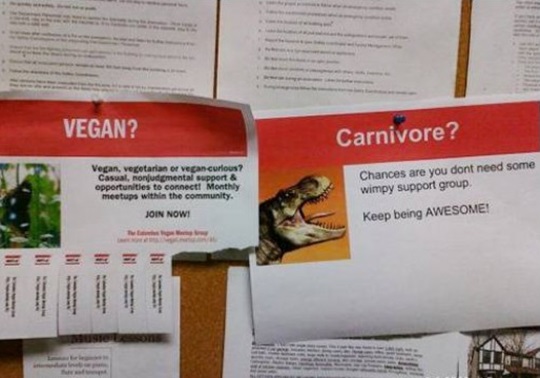



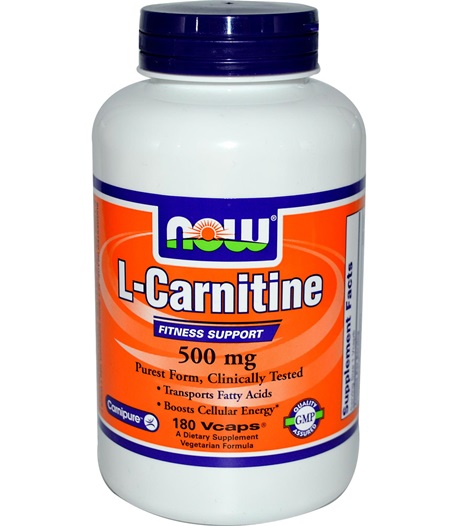
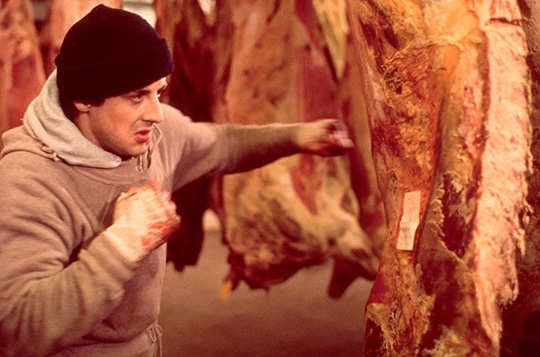




















 have never heard of it. For some strange reason, MONICA doesn’t even begin to get the same kind of attention awarded to famous but much smaller projects like Seven Countries or Framingham.
have never heard of it. For some strange reason, MONICA doesn’t even begin to get the same kind of attention awarded to famous but much smaller projects like Seven Countries or Framingham.



